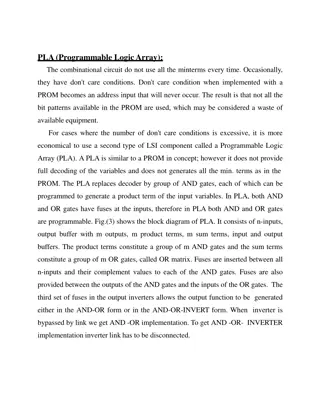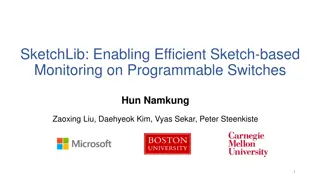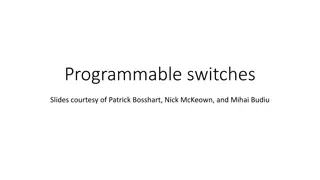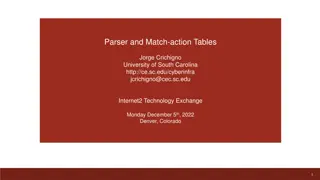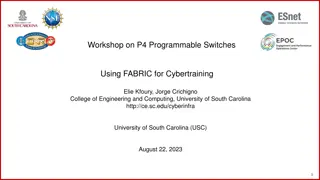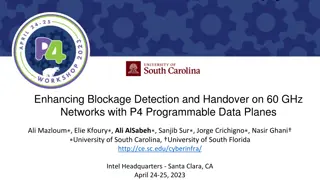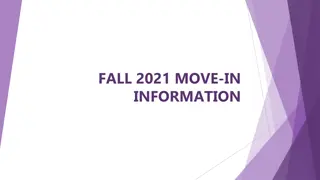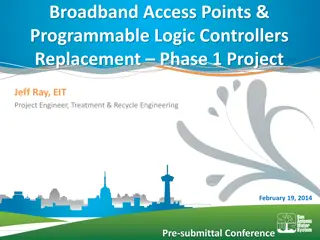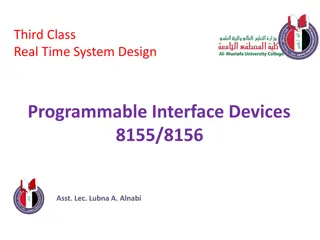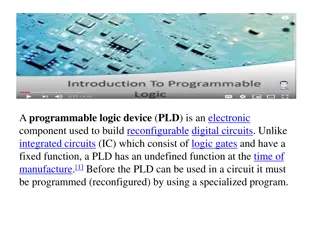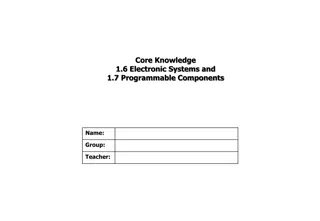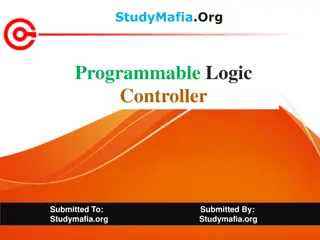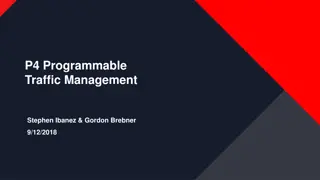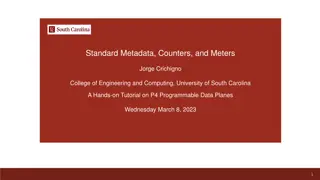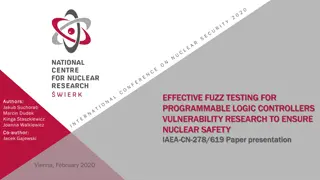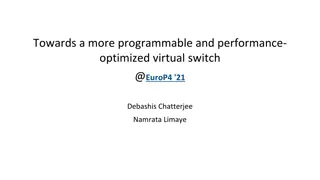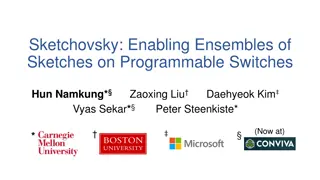MOVE: A Language With Programmable Resources Overview
Move is a language designed by Meta for the Libra blockchain to manage digital assets. It aims to encode and transfer assets in an open system while addressing challenges like asset scarcity and access control. The language, represented through images, introduces the Move Language Definitions and discusses the challenges of ownership representation in digital assets.
Download Presentation

Please find below an Image/Link to download the presentation.
The content on the website is provided AS IS for your information and personal use only. It may not be sold, licensed, or shared on other websites without obtaining consent from the author. Download presentation by click this link. If you encounter any issues during the download, it is possible that the publisher has removed the file from their server.
E N D
Presentation Transcript
MOVE: A Language With Programmable Resources SAM BLACKSHEAR, EVAN CHENG, DAVID L. DILL
Overview Background Managing Digital Assets on a Blockchain Move Design Move Overview The Move Language Definitions
Background Created by Meta Based on Rust Designed to be used in the Libra blockchain (Diem) but can also be used in other blockchains as well Resource/Asset/Currency
Managing Digital Assets on a Blockchain
Encoding Digital Assets in an Open System We want to be able to encode assets We want to be able to transfer assets The system is an open system. Each person can suggest any state transition, but not all state transitions should be allowed.
Challenges It is challenging to choose a representation of transitions and state that encodes ownership of digital assets: Scarcity - The supply of assets in the system should be controlled. Duplicating existing assets should be prohibited, and creating new assets should be a privileged operation 1) Access control - A participant in the system should be able to protect his assets with access control policies. 2)
Straw Coin ? ?????? ??? ? ?????? ????? ? ? ? ?????? ?? ????? ? ? ? ? ????? ?? ? ? ??????? ??????? ?? ? ? ?????? ??? ? ?? ? ? ?????? ?????
Straw Coin ?? ????? ? ?????? ??? ?? ??? ? ?????? ???
Straw Coin ??? ????? ? ???????? ????? ?? ?????? ??? ????? ?? ??? ?? ?????? ???
Problems with existing Blockchain Languages Straw coin is an attempt to capture the essence of the bitcoin script and EVM bytecode Unfortunately there are still some problems: Indirect representation of assets. 1) Scarcity is not extensible. 2) Access control is not flexible. 3)
Problems with existing Blockchain Languages Indirect representation of assets. 1) An asset is encoded using an integer, but an integer value is not the same thing as an asset. In fact, there is no type or value that represents Bitcoin/Ether/StrawCoin
Problems with existing Blockchain Languages Scarcity is not extensible. 2) The language only represents one scarce asset. In addition, the scarcity protections are hardcoded directly in the language semantics. A programmer that wishes to create a custom asset must carefully reimplement scarcity with no support from the language.
Problems with existing Blockchain Languages Access control is not flexible 3) The only access control policy the model enforces is the signature scheme based on the public key. It is not obvious how to extend the language to allow programmers to define custom access control policies.
Partial solutions Bitcoin scripts Allows modification of access control, but the language isn t turing-complete. Also, there is no option to create custom made resources. EVM Turing-complete, allows creating new resources, procedures, virtual calls, loops and data structures. Problems: creating new resources can be risky, and so is dynamic dispatch (DAO attack)
Move Design Move was designed with 4 key goals in mind: First-class Assets Flexibility Safety Verifiability
First-Class Assets A resource can never be copied or implicitly discarded A resource can only be moved between program storage locations. These safety guarantees are enforced statically by Move s type system (before executing the code). Move must allow resources to be created, modified, and destroyed. Move programmers can protect access to these critical operations with modules
Flexibility Each Libra transaction includes a transaction script that is effectively the main procedure of the transaction. A transaction script is a single procedure that contains arbitrary Move code, which allows customizable transactions. A script can invoke multiple procedures of modules published in the blockchain and perform local computation. modules/resources/procedures resembles classes/objects/methods but modules can have multiple resources (or none), and procedures don t have the notion of this or self
Safety Every transaction goes through the byte-code verifier in order to check resource safety, memory safety and type safety. The verification is done on-chain and therefor no need to add a compiler to the trusted computing base. Also we can avoid the computation required by the compiler.
Verifiability Off-chain verification (for the users benefit) Move is more amenable to static verification than most general-purpose languages: Nodynamic dispatch - easy for verification tools to reason precisely about the effects of a procedure call without performing a complex call graph construction analysis 1) Limited mutability - Every mutation to a Move value occurs through a reference. References are temporary values that must be created and destroyed within the confines of a single transaction script. This makes it easier for the verifier. 2)
Verifiability Modularity one module cannot violate another module s properties therefor the verifier can check each module by itself. 3)
Modules/Resources/Procedures Every account has an address, and every address has modules and resources. It is impossible to create 2 modules with identical names under the same address Similarly it is impossible to create 2 resources with identical names under the same module A module defines what other modules can execute (like public methods). Otherwise the only action available by other modules is move It is possible to create 2 modules with the same name under different account addresses. Same for resource, but then it is a different resource
Peer-to-Peer Payment Transaction Script Every variable must be passed via copy or move A resource must be moved exactly once It is forbidden to copy a resource (or there will be an error)
The Move Language - Definitions
Move Semantics The Call bytecode instruction requires a unique procedure ID as input. This ensures that all procedure calls in Move are statically determined
Bytecode Interpreter The ByteCode instructions are executed stack-based interpreter similar to JVM The stack is used for: input, output, function calls and operands (for arithmetic calculations) Each bytecode instruction has an associated gas unit cost, and any transaction to be executed must include a gas unit budget. Similar to EVM Instruction types: CopyLoc/MoveLoc used to copy/move data of local variables to the stack. StoreLoc takes the data from the stack and stores it in a local variable. Pack/unpack creates/destroys the declared module s resources MoveToSender publishes a new resource under a specific account (it is possible to call this instruction once per resource)
Bytecode Verifier Control Flow Graph in order to check all the possible runtime scenarios. Stack balance checking Verifies that a Callee function cannot access stack locations that belong to its caller. Type checking The verifier checks that each instruction and procedure is invoked with arguments of appropriate types Kind checking: Resources cannot be duplicated restricting CopyLoc on resources and ReadRef on a reference to a resource. Resources cannot be destroyed restricting StoreLoc on variables that holds resource, and WriteRef on a reference to a resource. Resources must be used - When a procedure returns, no local variables may hold a resource value.
Move Virtual Machine E Block 1 Block n + 1 Block 2 Block n
Move Virtual Machine ?2 2 ?1 1 ???1 ???1 ???2 ???? Bloc 1 ???2 Bloc k n ???? T1 Bloc k 1 Bloc k 2 Bloc k n ? = ?1 ?2 ?? = ? ??????? ??


